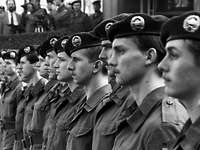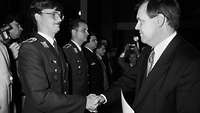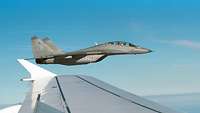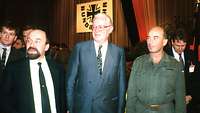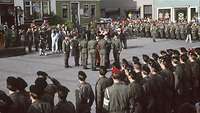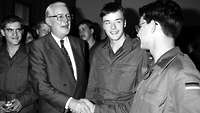On the one hand, reunification on 3 October 1990 meant that the National People’s Army and other East German armed organisations (such as border troops and workers’ militias) were disbanded. On the other hand, some of the more than 90,000 temporary-career volunteers and career service members from the National People’s Army had to be integrated into the Bundeswehr. This effort was made more difficult by the 1990 Treaty on the Final Settlement with Respect to Germany, which governed German reunification. This treaty called for disarmament of the Bundeswehr down to first 370,000 military personnel and then 340,000 military personnel as of 1994. Nevertheless, the Bundeswehr as an army of unity initially took on some 76,000 temporary-career volunteers and career service members from the National People’s Army.
The National People’s Army’s weapons, vehicles and materiel presented a further challenge. More than 15,000 large weapon systems (battle tanks, armoured infantry fighting vehicles and aircraft) and about 300,000 tonnes of ammunition had to be disposed of. The Bundeswehr temporarily continued the use of some transport aircraft and armoured infantry fighting vehicles, and kept all 24 of the MiGMikoyan-Gurewitsch 29 combat aircraft in use until 2004. However, taking over these systems was an exception to the rule. Some NATONorth Atlantic Treaty Organization partners and third countries bought patrol boats, attack helicopters and armoured infantry fighting vehicles from the inventory of the former National People’s Army.
